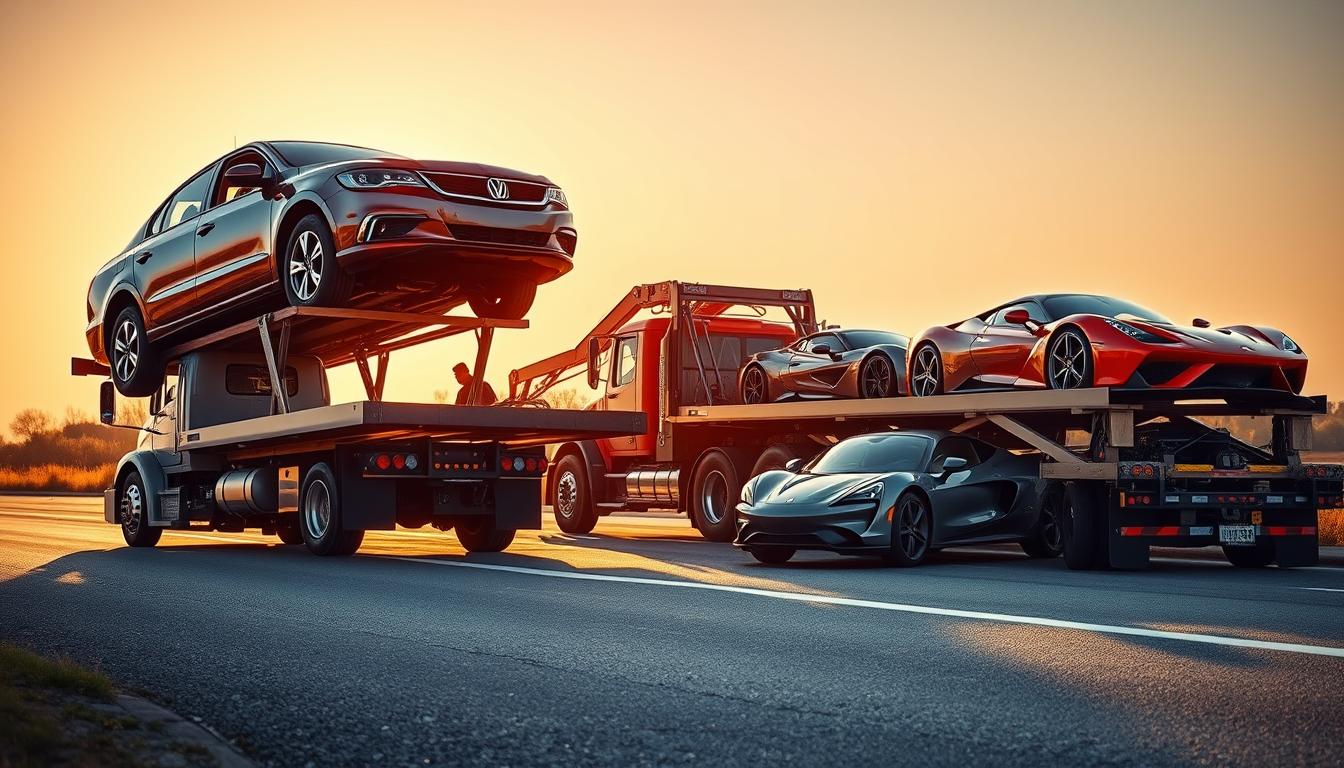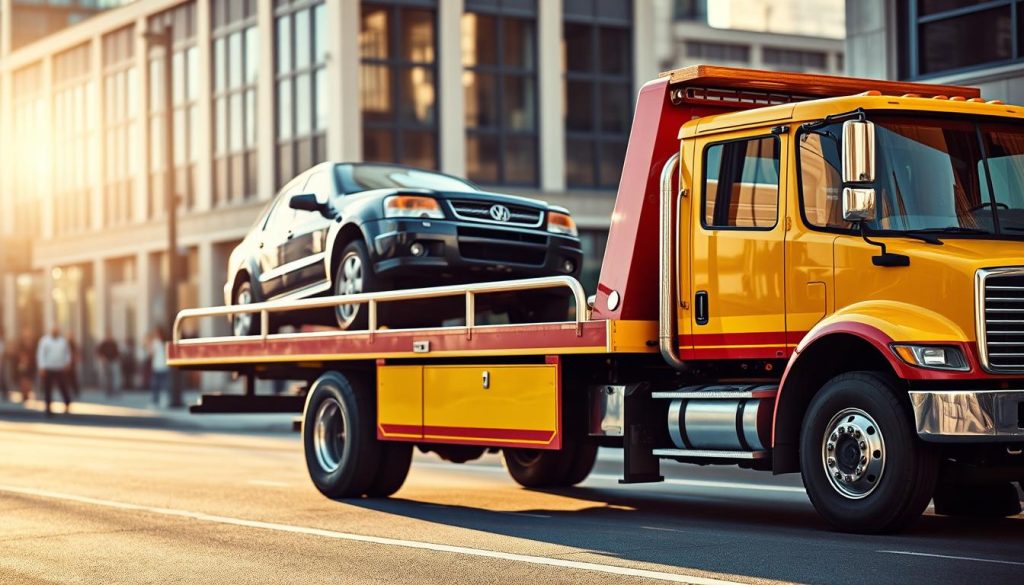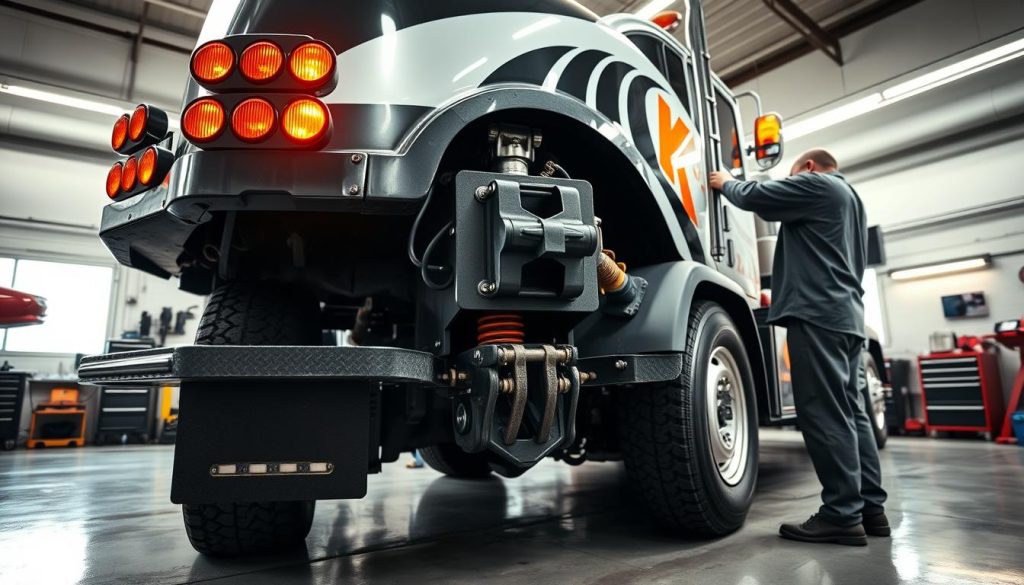
What happens when your vehicle stalls on a busy highway? Choosing the right towing method matters more than you think. Not all tow trucks work for every situation—using the wrong one could cost extra or harm your vehicle.
Flatbed towing, for example, keeps your car completely off the ground. It’s perfect for luxury cars or all-wheel-drive vehicles. Wheel lift trucks hook your car’s axle, ideal for quick roadside pickups. Heavy-duty wreckers? They’re built for semi-trucks or buses, showcasing the different types towing services available. Understanding the different types of towing services is essential for ensuring motorist safety, especially during unexpected roadside emergencies.
Ever seen a tow truck with chains dragging a car? That’s outdated. Modern methods prioritize safety and precision. Companies like Tow Recover Assist use specialized tow trucks to match your needs, whether you drive a sedan or an SUV, illustrating the various types towing services.
Knowing these options helps you ask the right questions during emergencies. Why risk scratches or transmission damage when better solutions exist? Let’s break down how each service works—and when to use them in this guide.
Imagine your car refusing to start after a movie night. You’re stuck in a dark parking lot with zero mechanical skills. That’s when professional towing becomes your superhero. This process connects your stranded vehicle to specialized equipment using secure hitches or cables, moving it safely to repair shops or safer locations.
Roadside breakdowns don’t care about your schedule. A dead battery at 2 AM? A flat tire during rush hour? Reliable towing assistance gets you moving again. Proper techniques prevent scratches, transmission issues, or worse. Did you know using the wrong hitch height can damage your car’s undercarriage? That’s why experts check tire pressure and brake systems first. Understanding the different types of towing services available can also help you choose the right one for your needs.
Modern tow trucks are like Swiss Army knives. They come with wheel lifts, flatbeds, and stabilizers. Drivers train for hours to handle everything from compact cars to SUVs. Their equipment includes:
Next time you see a tow team working, notice how they position the truck. They protect your vehicle and traffic flow simultaneously. It’s not just strength—it’s precision. If you’re considering different types of towing services available, be sure to ask about the hook chain options for securing your vehicle.
Ever watched a tow truck rescue a stranded vehicle and wondered how they choose their tools? Modern recovery teams use specific methods tailored to your car’s needs. Let’s explore the most reliable options available today.

Flatbed trucks act like mobile parking spots. Your entire vehicle rests on a platform, wheels never touching pavement. This method shines for luxury cars or vehicles with all-wheel drive. No dragging, no strain on drivetrains—just secure transport from point A to B, making it one of the most preferred types of towing.
Need a quick roadside fix? Wheel lift towing uses hydraulic arms to cradle two wheels. It’s fast and affordable for short hops. But that old-school hook and chain method? Chains wrap around axles, risking scratches. Most companies reserve this for junk cars or emergencies, so be sure to ask your local towing service about their different types of towing options.
Big rigs need big solutions. Integrated systems combine heavy-duty winches and stabilizers to haul buses or semis. Motorcycles demand different care—special clamps grip front wheels while keeping bikes upright. Ever seen a Harley strapped to a tow truck? That’s precision work in specialized tow services.
Picture this: your SUV sputters to a stop on a mountain pass. Smoke curls from the hood as trucks roar past. Your next call determines everything—will help arrive in a pickup-sized tow truck or a massive rig? Matching your vehicle’s needs to the right equipment prevents headaches and hidden costs.
Light-duty trucks handle most everyday rescues. Think sedans, crossovers, or pickup trucks. These nimble vehicles use wheel lifts or compact flatbeds. Perfect for:
Heavy-duty wreckers? They’re the giants of towing. Hydraulic winches and reinforced frames haul semi-trucks, bulldozers, or mobile homes. Pro tip: Check your vehicle’s weight—if it’s over 10,000 lbs, demand this specialized service.
Emergency services fix “I need help now” situations. Flat tires, locked keys, or minor accidents. They prioritize speed with basic tools. Recovery teams? They tackle flipped cars, submerged vehicles, or off-road mishaps. Specialized gear like rotators and air cushions stabilizes wreckage before lifting.
Last winter, a friend’s Tesla slid into a frozen ditch. Standard tow trucks couldn’t reach it. A recovery team used tracked vehicles and drone spotlights—that’s expertise you can’t improvise.
Choosing wisely saves time and cash. Ask providers: “What’s your truck’s weight limit?” and “Do you handle recovery work?” Your car deserves the right rescue partner.
What if a simple oversight during towing leaves your car with permanent scratches? Proper preparation turns risky situations into smooth solutions. Let’s explore how to choose a reliable towing service and how professionals keep vehicles safe from pickup to drop-off.

Tire pressure isn’t just about fuel efficiency—underinflated tires can wobble during transport, damaging rims. Always verify hitch height matches your vehicle’s rear axle. Loose tow bars? They create dangerous sway at higher speeds. Understanding the different types of towing methods can also help prevent issues.
Professional teams inspect three key areas:
Ever seen a car dragged backward? That’s how transmissions get ruined. Front-wheel-drive vehicles need dollies to protect drivetrains. For rear-wheel models, wheel lifts work better than flatbeds in tight spaces. When using hook and chain methods, extra caution is necessary to avoid damage.
Rainy days demand extra caution. Did you know wet roads increase stopping distance by 30%? Adjust speed and check brake lights twice before moving.
Keep these in your glove compartment: flashlights, reflective triangles, and your mechanic’s number. If your car needs shop transport, explain any existing issues—a sticking gearshift or sensitive steering helps drivers adjust their method. Knowing the different types of towing services available can also aid in this process.
Remember that time Dave’s truck slid on black ice? His quick call to a towing team prevented a multi-car pileup. Clear communication saves time and reduces risks for everyone involved.
When your car’s dashboard lights up like a Christmas tree, knowing your options turns panic into action. Every situation demands a specific solution—flatbeds cradle delicate cars, while wheel lifts handle quick roadside assistance. Got a stuck semi or overturned bus? That’s heavy-duty territory.
Matching your needs to the right service prevents headaches. Consider your vehicle’s weight first. Compact cars rarely need industrial wreckers, while SUVs might require extra stabilization. Rain-slicked roads? Ask about non-skid straps or covered transport.
Always describe your exact scenario when calling for help. “My sedan’s rear axle is dragging” tells operators more than “I need a tow.” Many companies offer detailed guides to help you choose wisely before emergencies strike.
Why risk unnecessary damage? Professional teams want to use the safest method for your wheels. Keep this knowledge handy—it could save your transmission and your wallet. Next time trouble hits, you’ll know exactly how to get rolling again.
Flatbed tow trucks use a hydraulic platform to fully lift cars off the ground. This protects wheels, suspensions, and drivetrains from road friction. It’s ideal for luxury cars, EVs, or vehicles with all-wheel drive systems like Subaru or Audi models. Understanding the different types of towing can help you choose the right service.
Hook and chain methods drag vehicles by their axles or frames, which can harm modern unibody designs. Avoid this for cars made after 2000, hybrids like the Toyota Prius, or anything with low ground clearance. Always ask your provider about their equipment, including the type of hooks they use, first!
No—heavy-duty recovery requires specialized rigs like integrated tow trucks. These have stronger winches and reinforced frames to safely move buses, RVs, or construction equipment. Companies like Miller Industries build trucks rated for 50+ tons, which are essential for handling various types of towing.
Reputable services use rubber pads on metal hooks to protect rims. Before agreeing, check if they secure loose parts like bumpers. Ever seen a dangling exhaust pipe? Proper straps and a slow driving speed reduce risks during wheel lift towing.
Carry reflective triangles, a charged phone, and your insurer’s contact. If stranded, park away from traffic and note landmarks. AAA members get free towing up to 200 miles—check your plan’s details while waiting for help.
Front-wheel-drive vehicles (like Honda Civics) often require dollies to lift the drive wheels. This stops transmission damage caused by spinning wheels in neutral. Ask your provider if they include dollies for long-distance moves, as they are one of the types of towing services that can prevent further issues.
Request Emergency Roadside Assistance
Use the form here and we’ll respond as quickly as possible or call the number displayed.